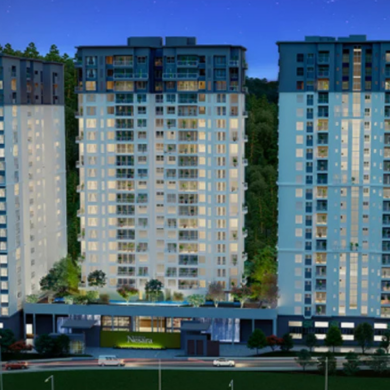
Infrastructure development charges (IDCs) are fees imposed on real estate developers by local authorities to fund the construction or improvement of public facilities like roads and parks. They are typically paid as a condition for development approvals or when obtaining building permits.
In real estate, infrastructure development charges (IDCs) refer to the fees imposed on developers by local or municipal authorities to finance the construction or improvement of essential public facilities and services. These charges are typically levied when obtaining building permits or as a condition for development approvals.
Infrastructure development charges play a significant role in real estate development as they directly impact the cost and feasibility of projects. These charges are payments made by developers to local governments or authorities to fund the construction, maintenance, and enhancement of public infrastructure such as roads, water supply systems, sewage networks, and parks. These charges aim to ensure that new developments contribute their fair share towards the essential infrastructure needed to support growth and provide amenities to residents and businesses.
This blog explains these charges and why they are essential in real estate.
Table of Contents
What Are IDCs?
Infrastructure Development Charges (IDCs) are fees levied on developers or property owners to finance infrastructure projects. Municipal governments typically impose these charges to fund the construction or improvements of essential amenities such as roads, sewer systems, parks, and utilities that support new development in a particular area.
The Importance of IDCs in Real Estate
IDCs serve as a crucial mechanism to ensure that developers and the community share the burden of providing and maintaining necessary infrastructure. The funds collected through these charges are allocated towards projects such as roads, water supply systems, sewage treatment plants, parks, and schools, thereby enhancing the quality of life in an area and increasing property values. Properly implemented IDCs help balance growth with adequate infrastructure provisions while reducing strain on public budgets.
However, authorities need to ensure transparency in their collection and utilisation to gain public trust and avoid any potential misuse of funds allocated for infrastructure development.
By imposing these fees, authorities can avoid burdening taxpayers with expanding or upgrading public services due to increased demand from new developments. Furthermore, infrastructure development charges also serve as a mechanism for leveraging private investment in public infrastructure while maintaining a sustainable financial model for local governments. Consequently, these charges promote responsible urban planning and assist in creating well-planned communities with adequate amenities for residents while ensuring that real estate development is financially viable in the long run.
Difference Between External Development Charges (EDC) and Infrastructure Development Charges (IDC)
External development charges and Infrastructure development charges are both forms of levies imposed by local authorities to fund the growth and expansion of urban areas. However, they differ in terms of their applications and purpose.
External development charges are typically levied on developers when they carry out construction projects that increase population or demand for infrastructure facilities. These charges aim to compensate for the external costs associated with increased development, such as upgrading roads, water supply systems, and drainage networks.
On the other hand, infrastructure development charges are specific fees collected from property owners within a defined area to finance the construction or enhancement of infrastructure facilities like schools, parks, public transportation systems, etc. They may be charged upfront or as annual payments based on property values. Overall, while external development charges focus on mitigating broader external impacts caused by new developments, infrastructure development charges primarily address local infrastructure needs resulting from population growth.
Calculation of IDCs
Infrastructure charges are often determined based on the development’s additional demand on trunk infrastructure. They are determined during the development approval process. The following development attributes are considered in the calculation: Site and location, such as residential or non-residential zoning and the applicable charge areas. Type of development and land use, such as residential subdivision, hotel, motel, business, industry, and necessary services. Size and scope of development, such as the total number of apartments in a hotel or the gross floor space of a warehouse.
The cost of a residential development varies based on the extra number of bedrooms, suites, and residences. When it is finished, the additional gross floor area and the impervious area (the area that causes water to run to stormwater drains are included in the impervious area) of the development site are considered and determined by the charges for non-residential development.
To calculate IDC, you can:
- Determine the permissible area for development
- Divide the applicable EDC rate per acre by the total permissible area
- Calculate the development charge rate per square foot
Legal and Regulatory Aspects
The role of local authorities and governments in Infrastructure Development Charges (IDCs) in real estate is crucial for ensuring the effective development of infrastructure in growing urban areas. These charges are imposed on developers to fund the public infrastructure required to support new real estate developments.
Local authorities and governments play a critical role in determining the appropriate level of IDCs based on the projected impact of new developments, ensuring that they are proportionate and fair. They also need to assess the specific infrastructure needs within their jurisdiction carefully, considering factors such as existing infrastructure gaps or deficiencies, population growth projections, and environmental impacts.
Moreover, local authorities must ensure transparency in how IDC funds are used and channel them effectively towards essential projects like road networks, water supply systems, sewage systems, parks, and recreational facilities. Ultimately, with effective planning and management by local authorities and governments, IDCs can significantly contribute to sustainable and well-planned urban development while alleviating the burdens imposed on taxpayers for financing vital infrastructure projects.
According to Pune Metropolitan Region Development Authority officials, areas in the Pune Metropolitan Region (PMR) closer to the city may be required to pay 100% more development fees. Rahul Mahiwal, the commissioner of the PMRDA, had previously stated that an internal committee was determining the costs for each sector or area based on geography. According to him, the fees will differ for the PMR’s 6000 square kilometres of rural and urban areas.
Challenges and Controversies
Infrastructure development charges, IDCs, pose significant challenges in India’s development landscape. One of the primary issues is the need for more clarity and consistency regarding their implementation across different states and cities. Inconsistencies in how these charges are computed, assessed, and collected create confusion among developers and hinder seamless infrastructure growth.
Moreover, there needs to be more proper governance and monitoring mechanisms to ensure that IDCs are effectively utilised for their intended purpose. This leads to funds being misused or diverted elsewhere, hampering infrastructure development efforts. Additionally, the capital-intensive nature of infrastructure projects requires substantial financial resources for sustainable implementation. However, the high upfront costs associated with IDCs often deter investors and developers from engaging in such ventures.
Furthermore, political interference can exacerbate challenges by leading to unpredictable policy changes and delays in implementing necessary reforms. Addressing these issues associated with IDCs will be crucial in unleashing India’s full potential for robust infrastructure development.
Benefits of Paying IDCs
Paying infrastructure development charges in India offers several benefits, making it a crucial aspect of national progress. First and foremost, these charges contribute to improving civic amenities and services, including transportation networks, water supply systems, sewerage facilities, and waste management infrastructure. This leads to enhanced quality of life for citizens, ensuring better connectivity, access to clean water, and improved sanitation.
Furthermore, paying these charges helps spur economic growth by attracting investments in real estate projects. Local authorities utilise the revenue generated from infrastructure development charges to upgrade and create new infrastructure. This creates jobs and fosters sustainable urban development while addressing the growing population densities in cities. Moreover, paying these charges promotes transparency and accountability in governance as it encourages the proper allocation of resources towards public utilities.
Consequently, residents benefit from efficient and well-maintained infrastructures that cater to their needs effectively. Paying infrastructure development charges contributes significantly towards building a modernised nation with robust physical foundations to support its people’s aspirations for a prosperous future.
Strategies for Managing IDCs
Infrastructure development charges in India can significantly impact the economic growth and sustainability of the country. As India strives to modernise and expand its infrastructure, effective strategies for managing these charges become crucial.
One strategy involves aligning the charges with developers’ costs during infrastructure development projects. This ensures that the burden is borne by those who directly benefit from the new facilities and reduces the risk of inflated charges.
A transparent and standardised formula for calculating these charges can enhance fairness and promote investor confidence.
Streamlining administrative procedures and establishing clear timelines for receiving approvals can expedite project implementation and minimise delays.
Collaborating with relevant stakeholders such as local authorities, industry associations, and community groups can facilitate dialogue, consensus-building, and better decision-making regarding infrastructure development costs.
By adopting a comprehensive approach encompassing cost rationalisation, transparency, efficiency improvements, and stakeholder engagement, Indian authorities can effectively manage infrastructure development charges while fostering sustainable economic growth for the nation.
Also Read: Real Estate Market in India: 2023 and Beyond
Conclusion
Understanding Infrastructure Development Charges (IDC) is of utmost importance, particularly for urban planning, real estate development, and government policymaking professionals. As India continues to experience rapid urbanisation and population growth, proper allocation of resources for developing necessary infrastructure becomes critical.
IDC is pivotal in bridging the gap between infrastructure demand and supply by ensuring adequate funds are allocated for infrastructural needs. Professionals must understand IDC regulations to accurately assess project feasibility, budgeting considerations, and land valuation appraisal. By comprehending these charges, stakeholders can make informed decisions regarding investment potential, locations for development projects, and the long-term sustainability of urban settlements. Thus, understanding IDC in India is fundamental for professionals aiming to promote sustainable development and contribute effectively towards building future-ready cities.
FAQs
1. What is IDC in real estate?
IDC refers to the fees levied on new construction projects to fund the expansion and improvement of public infrastructure such as roads, water supply systems, and sewage treatment plants.
2. What is the full form of IDC cost?
The full form of IDC is Infrastructure Development Charges. The term IDC describes the charges imposed on newly constructed buildings to finance the development and maintenance of public infrastructure, including roads, water supply networks, and sewage treatment facilities.
3. What is the full form of IDC in project management?
The full form of IDC in project management is Interest During Construction (IDC), which means interest during construction and shall be the sum of the interest during construction.
4. What is an IDC in loan?
The general institutional expenses incurred for shared or cooperative goals that are difficult to associate with a specific project are the Indirect Costs (IDC) of a funded project.
5. What is IDC in business?
IDC in business is called Institutional Deposits Corporation. An organisation that enables investors to make sizable deposits and yet receive full coverage from the Federal Deposit Insurance Corporation (FDIC) is known as an Institutional Deposits Corporation (IDC).







